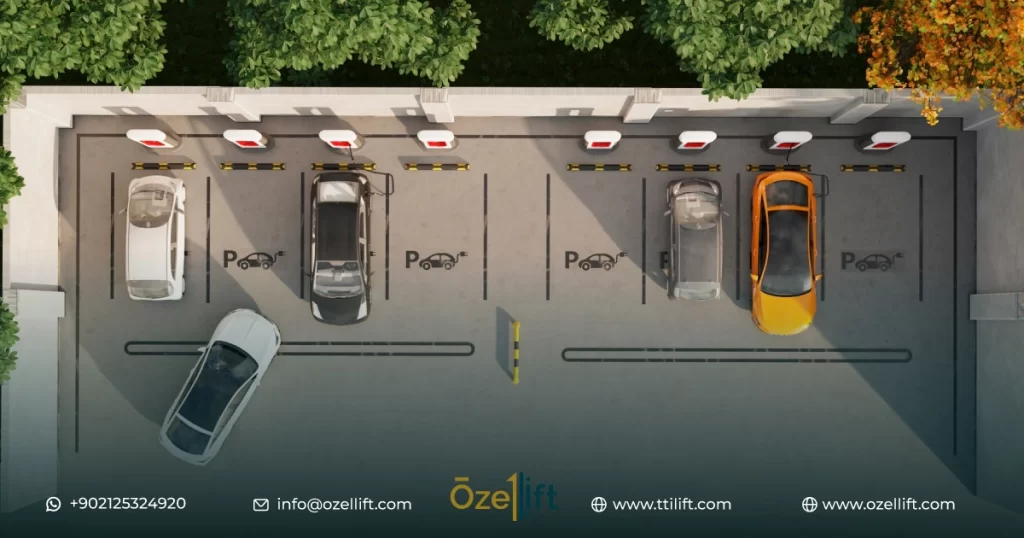Freight elevators are essential for transporting heavy loads between floors in various commercial and industrial settings. Understanding the optimal freight elevator dimensions is crucial to ensure efficient operations and compliance with safety regulations.
This comprehensive guide will delve into the key factors influencing freight elevator dimensions, including standard sizes, customization options, and code requirements. By the end, you will have a clear understanding of how to select the ideal freight elevator dimensions for your specific needs.
Key Factors Influencing Freight Elevator dimensions
The dimensions of a freight elevator are crucial to its functionality and efficiency. Several factors influence these dimensions, including:
1. Weight Capacity:
- Heavier loads require larger platforms to accommodate the weight.
- Increased weight capacity may also necessitate a stronger structure, which can influence the overall dimensions.
2. Item Size:
- Larger items demand a more spacious cab to ensure safe and easy transportation.
- Irregularly shaped items may require specific door configurations or platform designs.
3. Building Layout:
- Available space within the building, such as shaft size and pit depth, limits the elevator’s dimensions.
- Existing structures or architectural constraints may influence the design and size of the elevator.
4. Code Requirements:
- Building codes and safety regulations impose minimum standards for freight elevator dimensions, including car size, door width, and pit depth.
- Local regulations may vary, so it’s essential to consult with local authorities to ensure compliance.
5. Frequency of Use:
- High-traffic elevators may require larger dimensions to accommodate frequent use and reduce wait times.
- Less frequent use can allow for smaller, more compact elevators.
6. Specific Needs:
- Specialized applications may have unique requirements that influence elevator dimensions.
- For example, elevators designed for transporting vehicles or large machinery will have different dimensions than those used for general freight.
By carefully considering these factors, you can determine the optimal dimensions for your freight elevator to meet your specific needs and ensure efficient operations – and Contact us now for more information
Standard Freight Elevator Dimensions
While there are no universally standard dimensions for freight elevators, certain guidelines and industry practices exist. Typical dimensions include:
Cab Size:
- Width: 6 feet (1.8 meters) is a common starting point, but larger widths may be required for specific applications.
- Depth: 8 feet (2.4 meters) is a typical depth, but deeper cabs may be necessary for transporting larger items.
- Height: The height of the cab depends on the maximum load height and the building’s structural constraints.
Freight Elevator Door Sizes
- Width: Sliding or folding doors are typically used, with widths ranging from 4 to 6 feet (1.2 to 1.8 meters).
- Height: The door height depends on the cab height and the maximum load height.
Freight Elevator Pit Depth
- The depth of the pit beneath the elevator depends on the type of machinery and the building’s structural design.
- A typical pit depth for a freight elevator is around 6 feet (1.8 meters), but it can vary depending on factors such as the elevator’s weight capacity and the type of hoisting equipment used.
It’s important to note that these are general guidelines, and the actual dimensions of a freight elevator may vary depending on specific requirements and local building codes. Consulting with an elevator manufacturer or contractor is recommended to determine the most suitable dimensions for your particular application.
Customizing Freight Elevator Dimensions
Özellift Company is a leading provider of freight elevator solutions, offering a wide range of customization options to meet your specific needs. By working closely with Özellift’s experienced engineers, you can tailor the dimensions of your freight elevator to optimize its performance and efficiency.
Here are some of the customization options available through Özellift:
Cab Size:
- Width: Increase or decrease the width of the cab to accommodate larger or smaller loads.
- Depth: Adjust the depth of the cab to fit specific item dimensions.
- Height: Modify the height of the cab to accommodate taller items or to optimize space within the building.
Door Size:
- Width: Choose a door width that is appropriate for the size of the items to be transported.
- Type: Select between sliding or folding doors based on your preferences and space constraints.
Pit Depth:
- Adjust the pit depth to fit within existing building constraints or to accommodate specific hoisting equipment.
Additional Customization Options:
- Platform Material: Choose a platform material that is durable, resistant to wear and tear, and suitable for your specific load requirements.
- Control System: Select a control system that is easy to use and meets your operational needs.
- Safety Features: Incorporate additional safety features, such as emergency stops, overload protection, and lighting, to enhance the elevator’s security.
By working with Özellift, you can ensure that your freight elevator is designed to meet your exact specifications, providing optimal performance and efficiency for your operations.
Weight Capacity and Freight Elevator Dimensions
The weight capacity of a freight elevator is a crucial factor that directly influences its dimensions. Heavier loads require larger platforms and stronger structural components to ensure safe and reliable operation.
Key considerations related to weight capacity and dimensions:
- Platform Size: Larger platforms can accommodate heavier loads, but they also require more space within the building.
- Structural Strength: Elevators designed to handle heavier loads must have a robust structural framework, which may influence the overall dimensions.
- Hoisting Equipment: The type and capacity of the hoisting equipment used in the elevator also impact the weight capacity and dimensions.
- Building Code Requirements: Building codes often specify minimum structural requirements for elevators based on their weight capacity.
Relationship between weight capacity and dimensions:
- Higher weight capacity: Typically requires a larger platform, wider door, and a stronger structural framework.
- Lower weight capacity: May allow for smaller dimensions and a less complex structural design.
Example:
A freight elevator designed to transport heavy machinery or industrial equipment would likely have a higher weight capacity than one used for general cargo. This would necessitate larger dimensions, such as a wider platform and a deeper pit, to accommodate the heavier loads and ensure safe operation.
Know more about
Freight elevators
car elevator cost
Choosing the Right Freight Elevator Dimensions for Your Needs with ozellift
Özellift is a leading provider of freight elevator solutions, offering a wide range of options to meet your specific needs. When selecting the right dimensions for your freight elevator, it’s essential to consider several factors:
1. Weight Capacity:
- Determine the maximum weight your elevator will need to handle.
- Heavier loads require larger platforms and stronger structural components.
2. Item Size:
- Measure the dimensions of the largest items you’ll be transporting.
- The elevator’s cab and door must be large enough to accommodate these items.
3. Building Layout:
- Assess the available space within your building for the elevator shaft and pit.
- Consider any existing structural limitations or constraints.
4. Frequency of Use:
- Estimate how often the elevator will be used.
- High-traffic elevators may require larger dimensions to accommodate frequent use and reduce wait times.
5. Specific Needs:
- Identify any unique requirements, such as transporting vehicles or hazardous materials.
- These may influence the elevator’s dimensions and safety features.
Working with Özellift:
- Consult with experts: Özellift’s experienced engineers can help you evaluate your needs and recommend the most suitable dimensions.
- Explore customization options: Özellift offers a wide range of customization options to tailor the elevator to your specific requirements.
- Consider safety features: Ensure the elevator is equipped with appropriate safety features to protect users and equipment.
By working closely with Özellift, you can select the right freight elevator dimensions to meet your specific needs and ensure efficient and safe operations.
What factors influence freight elevator dimensions
Weight capacity, item size, building layout, code requirements, frequency of use, and specific needs are key factors.
What are typical freight elevator dimensions?
Cab size is often 6 feet wide by 8 feet deep, door size ranges from 4 to 6 feet, and pit depth can vary depending on the elevator type and building design.
Can freight elevator dimensions be customized?
Yes, freight elevator dimensions can be customized to meet specific requirements, such as cab size, door size, and pit depth.
How does weight capacity affect freight elevator dimensions?
Heavier loads require larger platforms and stronger structural components, which can influence the overall dimensions.
What are the benefits of working with a company like Özellift for freight elevator dimensions?
Özellift can provide expert guidance, customization options, and ensure compliance with safety regulations.



